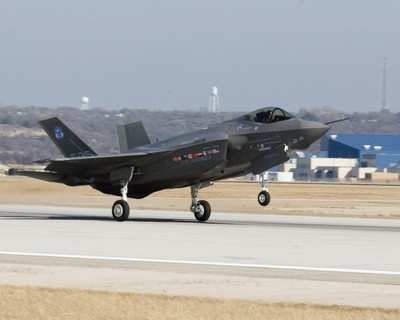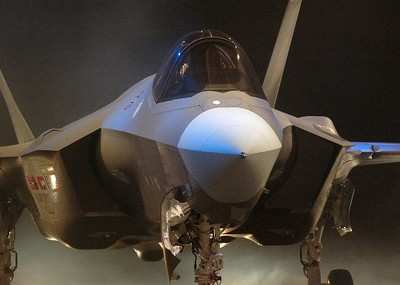Opponents Warn Purchase Would Only Support US Defense
Industry
The Canadian government has until 2012 to decide how it is going
replace its fleet CF-18s, but the military recently told Lockheed
Martin it will spend almost $4 billion for the purchase of 80 of
its Joint Strike Fighter F-35 Lightning II over the next 10
years.

An air force study in 2006 concluded the F-35 best suited
Canada's requirements of a fighter for air-to-air NORAD missions
and air-to-surface missions against targets in Canadian or foreign
waters, at the best price, according to the CanWest News
Service.
As ANN has reported, the F-35
is the first military aircraft to be produced by an international
coalition of eight nations to design, finance, build and sell the
jet.
The premise of the F-35 is the production of large quantities of
a high-tech, stealthy aircraft that is relatively affordable so
that not only nations that are part of the development coalition
can afford them, but so can ones that are not as the international
partnership stipulated.
Last year, the Canadian government agreed to take part in
development phase of the program, committing to spending around
$500 million over 45 years for specialized production equipment --
of which about $150 million has already been spent.

The other international partners, Italy, the Netherlands,
Norway, Turkey, Australia and Denmark that make up the development
coalition, have said they will purchase 600 to 700 of the aircraft,
with a price tag of around $75 million each for a basic model and
up to $90 million for more advanced versions.
Possibly limiting the actual number of F-35s actually needed by
Canada could be affected by unmanned fighter aircraft, as some
military observers have noted.
 "One doesn't know where technology
might end up in five years from now, for example, on unmanned
tactical platforms and how many of the missions can be performed
using unmanned capabilities versus manned tactical capabilities,"
Mike Slack, the Department of National Defense director of
continental material co-operation said. That dilemma is being faced
by all nations interested in the aircraft, he added.
"One doesn't know where technology
might end up in five years from now, for example, on unmanned
tactical platforms and how many of the missions can be performed
using unmanned capabilities versus manned tactical capabilities,"
Mike Slack, the Department of National Defense director of
continental material co-operation said. That dilemma is being faced
by all nations interested in the aircraft, he added.
But, the program could prove beneficial not just to the
military, but for Canada's entire aerospace industry.
So far, Canadian firms have been awarded around 150 F-35
contracts. According to government officials, Canadian industrial
opportunities are expected to total more than $5 billion over the
life of the program.
"There is nothing like this anywhere," Slack said. "This is the
largest defense co-operative program ever undertaken by Canada and
for that matter all the other countries involved in it."
Canada's decision does have its critics, however. University of
British Columbia international law professor Michael Byers is not
convinced this particular aircraft is best for his country.
"What is certain is that the Canadian taxpayer will, once again,
end up supporting the US defense industry," writes Byers in his new
book, Intent for a Nation.

Officials point out that all numbers given regarding this
program are just that: numbers. The whole process is in the
planning stages and could very well change, according to
CanWest.
 ANN's Daily Aero-Linx (05.02.24)
ANN's Daily Aero-Linx (05.02.24) ANN's Daily Aero-Term (05.02.24): Touchdown Zone Lighting
ANN's Daily Aero-Term (05.02.24): Touchdown Zone Lighting Aero-News: Quote of the Day (05.02.24)
Aero-News: Quote of the Day (05.02.24) ANN FAQ: Contributing To Aero-TV
ANN FAQ: Contributing To Aero-TV NTSB Final Report: Cirrus Design Corp SR20
NTSB Final Report: Cirrus Design Corp SR20






